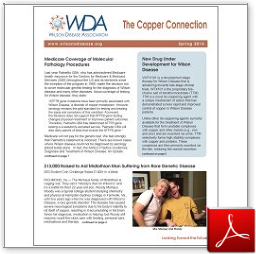Event Videos
|
http://www.ncbi.nlm.nih.gov/pubmed/25909866 Duché M, Ducot B, Ackermann O, Jacquemin E, Bernard O. Progression to high-risk gastroesophageal varices in children with biliary atresia with low-risk signs at first endoscopy. J Pediatr Gastroenterol Nutr. 2015 May; 60(5):664-8. Abstract Biliary atresia carries a risk of bleeding because of portal hypertension. Our goal was to define the factors associated with the emergence of endoscopic signs carrying a high risk of bleeding in children who did not display these signs at the first upper gastrointestinal endoscopy. METHODS: Published on:
May-2015
|
http://www.ncbi.nlm.nih.gov/pubmed/25418611 Rapaccini GL. Percutaneous ablative treatments of hepatocellular carcinoma. Hepatology. 2015 May; 61(5):1465-6. Published on:
May-2015
|
|
http://www.ncbi.nlm.nih.gov/pubmed/25564820 Ye W, Rosenthal P, Magee JC, Whitington PF; Childhood Liver Disease Research and Education Network. Factors Determining δ-Bilirubin Levels in Infants With Biliary Atresia. J Pediatr Gastroenterol Nutr. 2015 May; 60(5):659-63. Abstract OBJECTIVES: METHODS: Published on:
May-2015
|
http://www.ncbi.nlm.nih.gov/pubmed/25822855 Abstract Published on:
May-2015
|
|
Source : http://epaperbeta.timesofindia.com/Article.aspx?eid=31806&articlexml=COU... The high court on Monday directed the staterun Indira Gandhi Institute of Child Health (IGICH), Bengaluru, to provide free treatment to patients of Lysoso mal Storage Disorders (LSD), a group of 50odd genetic diseases caused by de ficiency of enzymes. |
http://www.ncbi.nlm.nih.gov/pubmed/25534776 Lien TH, Bu LN, Wu JF, Chen HL, Chen AC, Lai MW, Shih HH, Lee IH, Hsu HY, Ni YH, Chang MH. Use of Lactobacillus casei rhamnosus to Prevent Cholangitis in Biliary Atresia After Kasai Operation. J Pediatr Gastroenterol Nutr. 2015 May; 60(5):654-8. Abstract OBJECTIVES: METHODS: Published on:
May-2015
|
|
Tyrosinemia is an inborn error or metabolism i.e., a genetic error in the breakdown of an amino acid called tyrosine. Due to the error in breakdown, tyrosine and certain by-products accumulate in the body and cause the various disease manifestations. |
http://www.ncbi.nlm.nih.gov/pubmed/25522310 Isaac DM, Persad R, Huynh HQ, Shirton L, Turner JM. Satisfaction in open access versus traditional referral for upper endoscopy in children. J Pediatr Gastroenterol Nutr. 2015 May; 60(5):637-41. Abstract OBJECTIVES: Published on:
May-2015
|
|
http://www.ncbi.nlm.nih.gov/pubmed/25896839 Schillie S, Walker T, Veselsky S, Crowley S, Dusek C, Lazaroff J, Morris SA, Onye K, Ko S, Fenlon N, Nelson NP, Murphy TV. Outcomes of infants born to women infected with hepatitis B. Pediatrics. 2015 May; 135(5):e1141-7. Abstract BACKGROUND AND OBJECTIVES: METHODS: Published on:
May-2015
|
http://www.ncbi.nlm.nih.gov/pubmed/25539193 - [EHPVO (http://www.childrenliverindia.org/diseases/term/96)] Thomson MA, Leton N, Belsha D. Acute upper gastrointestinal bleeding in childhood: development of the sheffield scoring system to predict need for endoscopic therapy. J Pediatr Gastroenterol Nutr. 2015 May; 60(5):632-6. Abstract BACKGROUND/AIMS: METHODS: Published on:
May-2015
|




